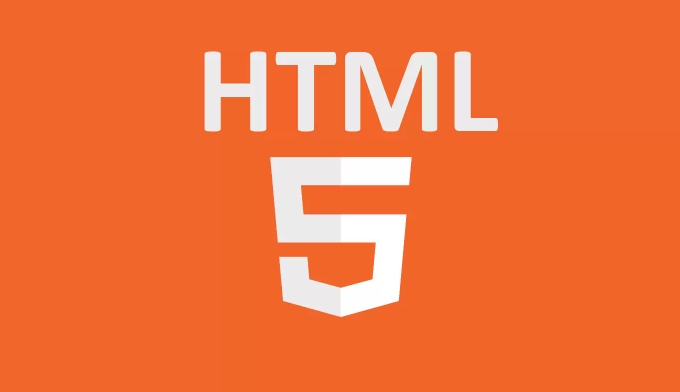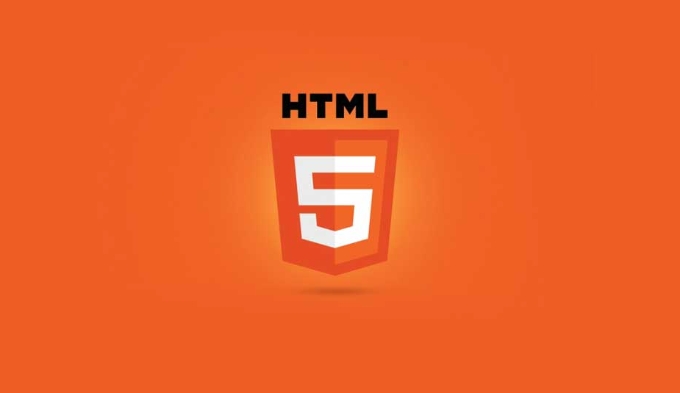Structuring page layout with HTML `` and `` elements.
Jul 02, 2025 pm 03:52 PMUse

Laying pages with HTML和elements is actually a very practical approach. Although these two labels are simple, their rational use can make the structure clearer and the semantics clearer, especially in responsive design and SEO optimization.
 ` elements." />
` elements." /> Why choose <div> and <code><span></span> ?
<div> is a block-level element, which is often used to divide the structural areas of the page, such as the header, content area, sidebar, etc. It has no default style itself, it depends entirely on you to control it, and it has high flexibility. <img src="/static/imghw/default1.png" data-src="https://img.php.cn/upload/article/000/000/000/175144274766174.jpeg" class="lazy" alt="Structuring page layout with HTML `<div>` and `<span>` elements."> ` elements." /><p> <code><span></span> is an inline element, usually used to wrap a small piece of text or content, suitable for local style adjustments or script operations. For example, highlight a few words, dynamically modify some content, etc.
They do not have their own meanings like semantic tags (such as <header></header> , <article></article> ), but they are still very common in actual development, especially when highly custom structures are required.
 ` elements." />
` elements." /> How to use <div> to build a basic page structure?<p> Most web pages can be divided into several main parts: top navigation, main content area, sidebar, bottom information. You can organize these blocks with multiple <code><div> :<pre class='brush:php;toolbar:false;'> <div id="header">Here is the website title or navigation</div>
<div id="main">
<div id="content">The main content is here</div>
<div id="sidebar">Sidebar content</div>
</div>
<div id="footer">footer information</div></pre><p> This writing structure is clear and can easily implement various arrangements with CSS layout (such as Flexbox or Grid). Each <code><div> can be styled or behavior individually via id or class .
<span> What scenarios are suitable for?
<span> What scenarios are suitable for? Because <span> is an inline element, it is more suitable for inserting some style changes or interactive functions in the middle of text. for example:
- Add color or background to the keywords in a paragraph
- Embed icons in buttons or load status prompts
- Dynamically update a number or status information
For example:
<p>Your account balance is: <span class="highlight">$100.00</span></p>
This allows the "$100.00" part to be highlighted without affecting the overall layout.
Several common misunderstandings and suggestions
Sometimes newbies abuse <div> and <code><span></span> , resulting in structural confusion. Here are a few tips:
- Don't over-neck, keeping the structure flat helps maintain
- Try to use more semantic tags (such as
<nav></nav>,<section></section>) to enhance accessibility and SEO - When you need layout, you prioritize modern layout methods (Flexbox, Grid) instead of relying solely on stacking
- If you just want to change part of the text style, use
<span>instead of creating a new<div><p> Basically that's it. Although they are simple, they can make your HTML structure clear and efficient if used properly.</p></div> - If you just want to change part of the text style, use
The above is the detailed content of Structuring page layout with HTML `` and `` elements.. For more information, please follow other related articles on the PHP Chinese website!

Hot AI Tools

Undress AI Tool
Undress images for free

Undresser.AI Undress
AI-powered app for creating realistic nude photos

AI Clothes Remover
Online AI tool for removing clothes from photos.

Clothoff.io
AI clothes remover

Video Face Swap
Swap faces in any video effortlessly with our completely free AI face swap tool!

Hot Article

Hot Tools

Notepad++7.3.1
Easy-to-use and free code editor

SublimeText3 Chinese version
Chinese version, very easy to use

Zend Studio 13.0.1
Powerful PHP integrated development environment

Dreamweaver CS6
Visual web development tools

SublimeText3 Mac version
God-level code editing software (SublimeText3)

Hot Topics
 Implementing Native Lazy Loading for Images in HTML
Jul 12, 2025 am 12:48 AM
Implementing Native Lazy Loading for Images in HTML
Jul 12, 2025 am 12:48 AM
Native lazy loading is a built-in browser function that enables lazy loading of pictures by adding loading="lazy" attribute to the tag. 1. It does not require JavaScript or third-party libraries, and is used directly in HTML; 2. It is suitable for pictures that are not displayed on the first screen below the page, picture gallery scrolling add-ons and large picture resources; 3. It is not suitable for pictures with first screen or display:none; 4. When using it, a suitable placeholder should be set to avoid layout jitter; 5. It should optimize responsive image loading in combination with srcset and sizes attributes; 6. Compatibility issues need to be considered. Some old browsers do not support it. They can be used through feature detection and combined with JavaScript solutions.
 What are the differences and use cases for html textarea and input type text?
Jul 12, 2025 am 02:48 AM
What are the differences and use cases for html textarea and input type text?
Jul 12, 2025 am 02:48 AM
The main difference is that textarea supports multiple lines of text input, while inputtext is only available in a single line. 1. Use inputtype="text" to be suitable for short and single-line user input, such as username, email address, etc., and can set maxlength to limit the number of characters. The browser provides automatic filling function, making it easier to uniformly style across browsers; 2. Use textarea for scenarios that require multiple lines of input, such as comment boxes, feedback forms, support line breaks and paragraphs, and can control the size through CSS or disable the adjustment function. Both support form features such as placeholders and required fills, but textarea defines the size through rows and cols, and input uses the size attribute.
 What is the purpose of guides, grids, and rulers in achieving precise layouts?
Jul 15, 2025 am 12:38 AM
What is the purpose of guides, grids, and rulers in achieving precise layouts?
Jul 15, 2025 am 12:38 AM
Rulers provide positioning references, Guides implement element alignment, and Grids builds a systematic layout. 1. Rulers display position coordinates, and can drag out reference lines to check element deviations and judge distance specifications; 2. Guides are virtual lines dragged out from rulers, accurately align elements and divide areas, and support locking and color settings; 3. Grids consists of rows and columns to control the overall layout rhythm, and adapt to responsive design, which are common, such as 12-column web page grids and 8px mobile grids. The combination of the three improves layout efficiency and professionalism.
 The `` vs. `` in HTML
Jul 19, 2025 am 12:41 AM
The `` vs. `` in HTML
Jul 19, 2025 am 12:41 AM
It is a block-level element, used to divide large block content areas; it is an inline element, suitable for wrapping small segments of text or content fragments. The specific differences are as follows: 1. Exclusively occupy a row, width and height, inner and outer margins can be set, which are often used in layout structures such as headers, sidebars, etc.; 2. Do not wrap lines, only occupy the content width, and are used for local style control such as discoloration, bolding, etc.; 3. In terms of usage scenarios, it is suitable for the layout and structure organization of the overall area, and is used for small-scale style adjustments that do not affect the overall layout; 4. When nesting, it can contain any elements, and block-level elements should not be nested inside.
 Structuring Content with HTML Headings and Paragraphs
Jul 12, 2025 am 02:44 AM
Structuring Content with HTML Headings and Paragraphs
Jul 12, 2025 am 02:44 AM
When writing web content, you need to pay attention to the title and paragraph structure to improve the reading experience and SEO effect. 1. The title level should be clear. A page should only use one h1 as the main title, h2 as the title of the big section, and h3 subdivides the subsections to avoid multiple h1, skip grades or keyword piles up; 2. The paragraph should be controlled in three to four lines, and the key points should be directly mentioned at the beginning, and if necessary, use the ul list to enhance readability; 3. Appropriately use the subtitles of h2 and h3 to guide readers' attention, facilitate information search and optimize search engine recognition.
 Specifying Character Encoding for HTML Documents (UTF-8)
Jul 15, 2025 am 01:43 AM
Specifying Character Encoding for HTML Documents (UTF-8)
Jul 15, 2025 am 01:43 AM
To correctly set the character encoding of the HTML document to UTF-8, you need to follow three steps: 1. Add at the top of the HTML5 part; 2. Configure the response header Content-Type: text/html; charset=UTF-8, if Apache uses AddDefaultCharsetUTF-8, Nginx uses charsetutf-8; 3. Select the UTF-8 encoding format when saving HTML files in the editor. These three links are indispensable, otherwise it may lead to garbled page code and failure of special character parsing, affecting user experience and SEO effect. It is important to ensure that HTML declaration, server configuration and file saving are consistent.
 Shadow DOM Concepts and HTML Integration
Jul 24, 2025 am 01:39 AM
Shadow DOM Concepts and HTML Integration
Jul 24, 2025 am 01:39 AM
ShadowDOM is a technology used in web component technology to create isolated DOM subtrees. 1. It allows the mount of an independent DOM structure on ordinary HTML elements, with its own styles and behaviors, and does not affect the main document; 2. Created through JavaScript, such as using the attachShadow method and setting the mode to open; 3. When used in combination with HTML, it has three major features: clear structure, style isolation and content projection (slot); 4. Notes include complex debugging, style scope control, performance overhead and framework compatibility issues. In short, ShadowDOM provides native encapsulation capabilities for building reusable and non-polluting UI components.
 Can you put a tag inside another tag?
Jul 27, 2025 am 04:15 AM
Can you put a tag inside another tag?
Jul 27, 2025 am 04:15 AM
?Youcannotnesttagsinsideanothertagbecauseit’sinvalidHTML;browsersautomaticallyclosethefirstbeforeopeningthenext,resultinginseparateparagraphs.?Instead,useinlineelementslike,,orforstylingwithinaparagraph,orblockcontainerslikeortogroupmultipleparagraph






